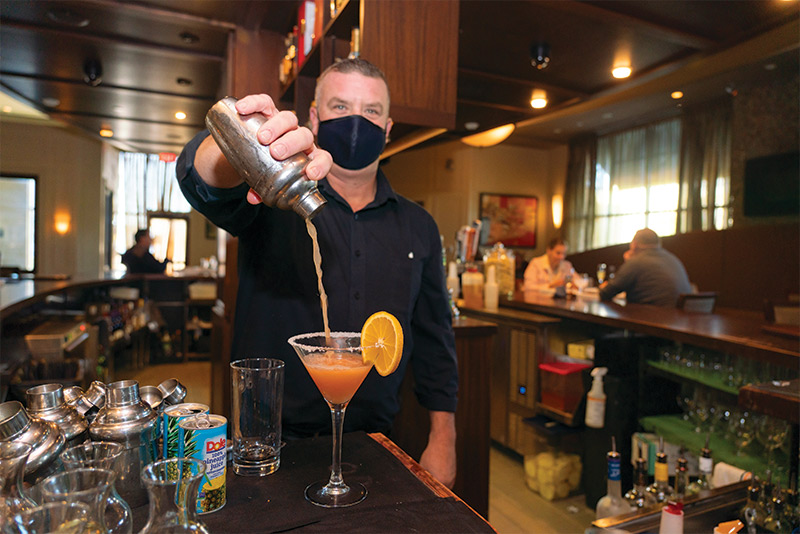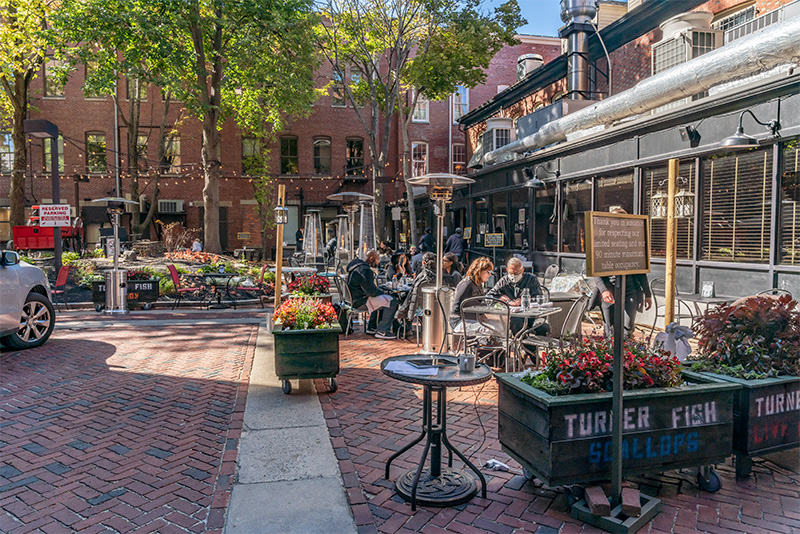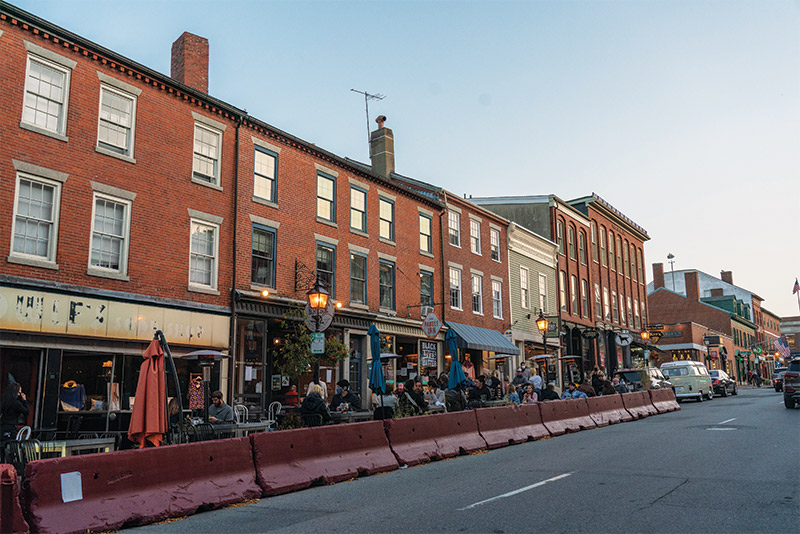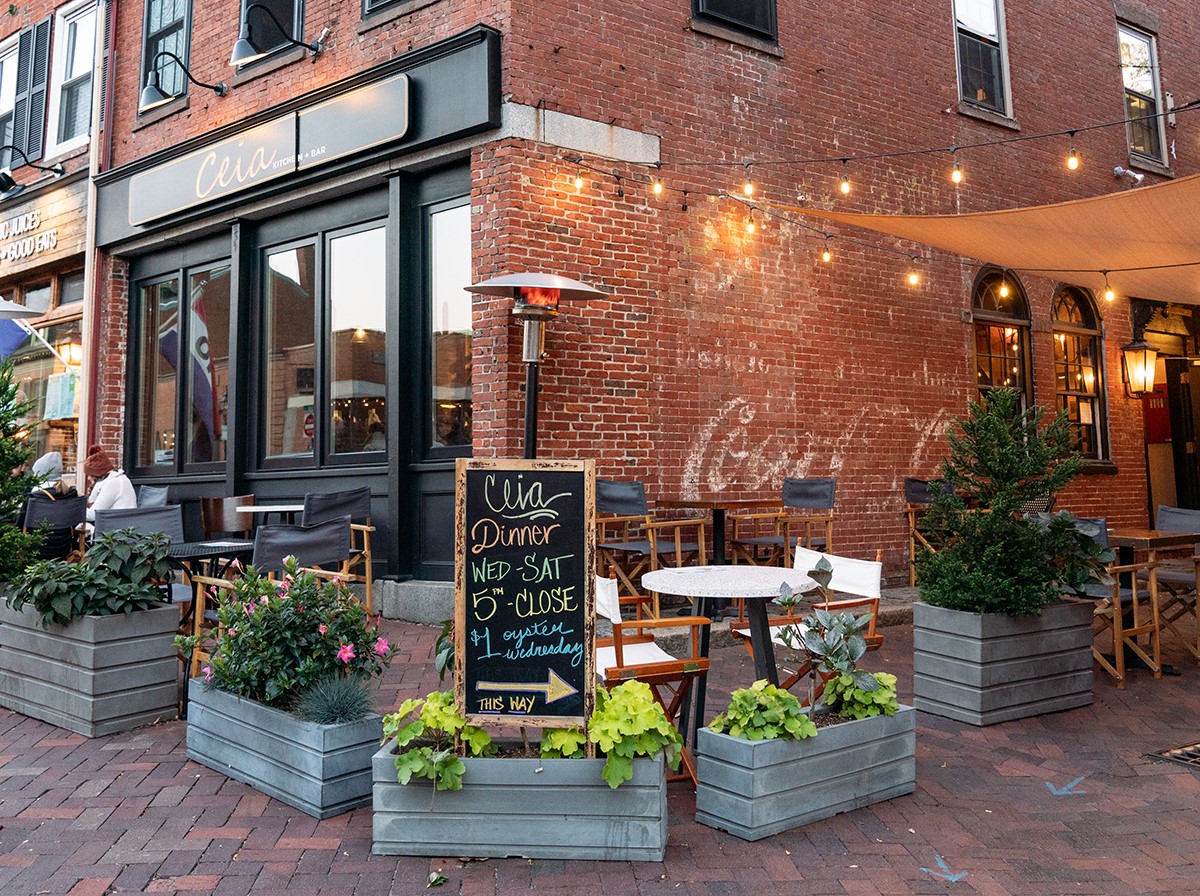Editor's Note: This article originally went to press in October 2020.
Since the COVID-19 pandemic spread at an alarming rate throughout America, one industry struck especially hard has been the restaurant industry. Rooted deeply in a social experience where contact is the norm, both for guests and for service workers, vulnerabilities surfaced almost immediately.
The industry’s reach is widespread. Sixty-three percent of consumers would rather spend money on an experience than purchase an item, according to the National Restaurant Association. Statistically, the Gallup organization’s research shows this aligns with 61 percent of Americans eating at a restaurant at least once in the past week.
“It’s been tragic,” says restaurateur and CEO Steve DiFillippo of Davio’s Northern Italian Steakhouse restaurant group with seven locations around Boston and in four other states. “It’s really difficult for restaurants now.”
In Massachusetts, 3,600 of the 16,000 restaurants that existed on the first of March have not reopened, the Massachusetts Restaurant Association reports. President and CEO Bob Luz says that 255,000 out of 300,000 industry workers have been laid off. “To have 39 percent yet to return to the workforce, I’d say that’s devastation.”
Kathi Turner of the Turner restaurants and renowned seafood fisheries, whose family footprints have been planted in New England for nearly 100 years, says business is down 50 percent at two of their restaurants. A new venture, the Rising Eagle Publick House, directly across the street from Turner’s Melrose Grill & Market, there since 1994, closed after only three months. They were forced to downsize from 230 employees to less than 100.

Meanwhile, chef and co-owner Kathy Milbury of My Place by the Sea in Rockport has reduced seating capacity to 50 percent and offered since June outdoor dining both on the upstairs and the downstairs decks overlooking spectacular ocean views. “People want to be outdoors no matter what the weather,” Milbury says. “They have been out there during these cold nights with winds blowing and lobster rolls flying in the air, and they still want to sit outdoors. We have not used our indoor seating at all.”
Milbury and co-owner Barbara Stavropoulos consulted with an architect to comply with safety protocols. There are two passageways, One Way In and One Way Out, with directional arrows. Hand sanitizer stations are available for entry and exit. The mask rule is strictly enforced until guests are seated.
My Place also uses contact tracing for every person, requiring names and telephone numbers. “Since seating is so limited and reservations are required, we fill up fast.” She has instituted a one-hour time limit per table, but tries not to enforce it unless it is necessary.
Of his seven restaurants in Massachusetts, DiFillippo is pleased under the circumstances with Davio’s at MarketStreet Lynnfield. He attributes this to its suburban location. “When people were not traveling and pretty much stayed at home, we had a great summer there,” he says. “By expanding outside with 92 seats we had more capacity than pre-COVID.”
With seasonal changes coming, additional plexiglass will be installed to enhance social distancing, and he hopes to have 80 to 90 percent indoor capacity throughout the winter. “It’s really about safety. That’s how we think.” Since menus are unchanging, Davio’s uses laminated menus sanitized after each use.
At Lynnfield, staffing was never a problem. “We have more people now than before COVID-19.” DiFillippo, in fact, shuffled workers over the summer from other restaurants. “Most people I work with couldn’t wait to get back to work.”

To Nancy Batista-Caswell, owner and hands-on proprietor of the Caswell Restaurant Group, “July felt like I was opening three restaurants in completely different styles and programs, and creativity was a big part of our month.” With two restaurants in Newburyport, Ceia Kitchen + Bar, a coastal European bistro, and BRINE, an oyster bar, along with Oak + Rowan at Fort Point Seaport in Boston, her challenges were filled with a series of pivots in uncharted business practices.
“I truly believe that restaurants are a combination of all things: great food, good service, and ambiance,” she says. With Brine she was unsure how guests would take to eating out on the street. “Cars are passing. There are emissions. It’s a consideration when you’re trying to build an atmosphere of people’s restaurant experience.”
Batista-Caswell still retained the use of printed, single-use menus. “I didn’t want people to feel uncomfortable. I still feel food and the experience of going out needed to be special. It couldn’t be just basics.”
Turner’s in Melrose opened before Mother’s Day with takeout, followed by dining in June. Almost half of the tables were removed, and there was no bar seating. Limited seating was installed outside, whereas in Salem at Turner’s Seafood at Lyceum Hall most dining was outdoors in the patio.
“While many people think that labor costs are variable, they are not,” Kathi Turner says. “In order to open an on-site dining establishment, about 60 percent of the costs are fixed. A lot of those have to do with the food prep team staffing in the kitchen. Because it doesn’t matter whether you do 50 people or you do 200 people, you need staff in each one of those positions. So, when your sales are down significantly as ours are, and when your fixed costs have not changed at all, it puts an awful lot of pressure on trying to get through to the other side of this.”
Turner’s uses the QR Code on the tables for ordering. “Ours are interactive with the ingredients listed. If we’re out of something, we can just take it off. New items can be entered on the fly. This allows us to maximize the guest information. We can present to them a menu in a much more efficient, cost-effective manner.”
The Melrose restaurant is beta testing a “tab system,” a cloud-based platform to improve customer self-ordering experience. “The server and guests interact using the same tab that will be paid at the end. It’s more in line with the traditional experience. They access it by cell phone or by a tablet we provide.”
However, Turner’s has an edge that most restaurants do not have—their fish markets are within the restaurants. During the lockdowns the retail stores remained open. The Gloucester Market & Fish n’ Chip Shoppe, located within the same facility as the Turner wholesale division, helped sustain their restaurants. “People came in and bought their own fish to prepare at home.”

As winter approaches, restaurateurs and diners face new challenges and choices. Milbury says, “Until it’s safe, we don’t want to do indoor dining.”
They investigated the option of gas heaters, but costs are a huge investment for a stop-gap measure which may be unnecessary when COVID-19 lessens. Meantime, other revenue streams may be in the offing. Already, My Place has hosted its first Zoom wedding with a small group of family and friends, and another wedding already has been booked. Then too, they have cut back their days to five instead of seven days a week. “For the first time in 25 years Barbara and I took time off in the summer.”
Batista-Caswell is considering creative approaches about how food can travel outside on cold nights. “I don’t want the experience to be lesser because we are going through a pandemic. I hope that word of mouth translates to guests all over that basically we are trying our hardest to keep customers safe and we’re conscious of their dining experience.”
When some sense of normalcy returns, Kathi Turner feels confident in a strong comeback. “We know we have the best seafood in New England. It’s just getting it to the people.”
DiFillippo relies on his business savvy and philosophy he’s developed over three decades in the food industry: “If you treat your “inner guests” [employees] as well as your “outer guests” who come through the front door, you’ll be all set."
“Right now, I’m trying to get to the other side. I’m not thinking about profit. We just have to get the vaccine plus eight months. I think we’re in this until next fall. I don’t think restaurants will come out of this for a long time,” DiFillippo says. “Funny how much we don’t know and how much we’ve learned. We’ll come out of it. We’re tough. It’s just going to take some time.”
Bob Luz concurs. “I’m an optimist at heart, and I know these restaurants will get to the other side of this, and I think in the long run we will get there. We need to get a vaccine and into the public. That’s only when things will start to shift to get better.”
Contact caswellrestaurants.com; davios.com; myplacebythesea.com; turners-seafood.com

